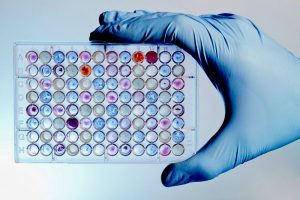
Five innovative projects focused on improving health won the Design by Biomedical Undergraduate Teams (DEBUT) challenge. The winners showed exemplary initiative in designing tools for a myriad of healthcare challenges including diagnosing latent tuberculosis (TB) and an innovative method to diagnose Alzheimer’s disease earlier. DEBUT is a biomedical engineering design challenge for teams of undergraduate students, managed by the National Institute of Biomedical Imaging and Bioengineering (NIBIB), part of the National Institutes of Health (NIH), and VentureWell, a non-profit that supports an emerging generation of science and technology inventor entrepreneurs. The NIBIB prizes were awarded based on four criteria: the significance of the problem being addressed; the impact of the proposed solution on potential users and clinical care; the innovation of the design; and the existence of a working prototype. In selecting its prizes, VentureWell considered two additional criteria: market potential and patentability. The $65,000 in prizes will be awarded during a ceremony at the annual Biomedical Engineering Society (BMES) conference on October 12.
The first place prize of $20,000 went to a team from the University of Maryland at College Park, who developed a revolutionary method of early Alzheimer’s diagnosis. Using portable EEG and artificial intelligence, their innovative device moves away from current costly neuroimaging diagnostic techniques such as MRI screenings, as well as qualitative methods of diagnosis such as the Mini-Mental State Examination (MMSE) to a more robust, affordable, and objective measure of analysis. Given the small footprint of both the device and algorithm, the portable EEG is able to collect and extract specific brainwave properties elicited after a distinct tone is exhibited to a patient. This combined device and software allows dementia diagnosis to become more quantitative, systematic, and cheaper.
Second place, with an award of $15,000, went to “3D Tracking-Assisted Functional Region Mapping Tool for Awake Neurosurgery.” The team from Arizona State University developed a device that digitizes the brain mapping process by combining a novel 3D-tracked cortical stimulation probe, real-time 3D tool tracking, and custom software for improved brain mapping functionality. Their novel cortical stimulation probe allows interrogation of brain tissue and the seamless application of digital tags to the surface of the brain containing 3D positional and user-customizable information. The digital tag information is displayed through a familiar neuronavigation interface, and the system provides haptic, auditory, and visual warning cues when certain surgical tools encroach upon tagged areas. This allows the surgeon to operate without looking away from the visual field while maintaining awareness of the location of critical brain regions.
Third place, $10,000 prize was given to Treyetech out of Johns Hopkins University. Their patent-pending device facilitates the insertion of corneal tissue grafts during the cornea transplant procedure, Descemet’s Membrane Endothelial Keratoplasty (DMEK). DMEK is the only type of cornea transplant that can restore a patient’s vision to 20/20, but lacks widespread adoption because it is very difficult for surgeons to perform. The team’s device significantly streamlines the procedure and has already iterated through over fifteen rounds of working prototype iterations.
The Venture Prize of $15,000 went to a team from George Mason University, “Application of Hydrogel Nanoparticles for a Latent Tuberculosis Rapid Diagnostic Test”. This team has developed an electrical, paper-based immunoassay using high affinity capture hydrogel nanoparticles (NPs) and amperometric sensors to provide a sensitive, specific, and quantitative method for latent tuberculosis (LTBI) diagnosis. Distinguishing the presence or absence of the NPs provides the basis for an electrical lateral flow immunoassay that can quantitatively detect TB biomarkers within a urine sample. This methodology is less invasive, more affordable, and versatile enough to be configured for other infectious disease and cancer diagnostics.
VentureWell’s Design Excellence Award and $5,000 went to AssistENT designed by a team from Johns Hopkins University. The device aims to be a non-surgical option for patients in need of enhanced nasal breathing. Taking the place of reconstructive surgery and adhesive strips, AssistENT is a comfortable and discreet nasal dilator that is inserted into obstructed nostrils to open the airways and facilitate breathing. It is designed for comfort through the use of form-fitting materials that conform to the nasal passage and distribute dilation forces evenly, and is the first intranasal dilator that is fully suitable for use during the day.
There were 44 eligible entries received from 22 universities in 16 different states. Congratulations to all our awardees!